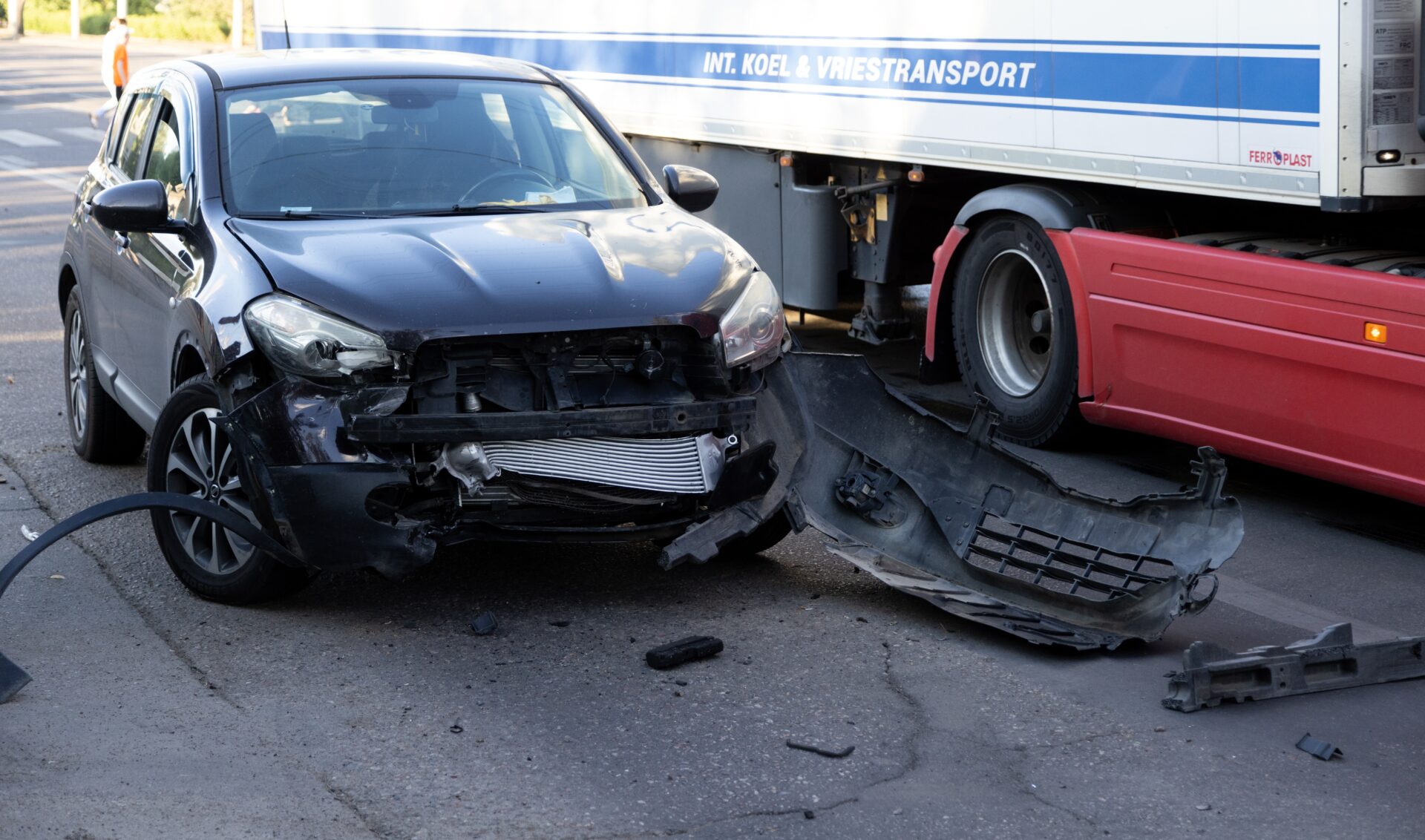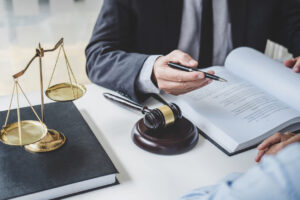Roman Austin | November 7, 2025 | Uncategorized

The circular flow of a roundabout is designed to keep traffic moving smoothly through Clearwater’s busy intersections. When drivers follow the rules, these junctions work as intended.
A single moment of confusion, impatience, or distraction can turn efficient design into a scene of twisted metal and sudden injury. If you were hurt because another driver failed to handle a roundabout correctly, you are left with the pain, the medical bills, and the frustrating question of how to hold them accountable.
Your compass in the chaos
A roundabout crash can feel disorienting, both physically and legally. These core points can help you find your bearings as you consider your next steps.
- The driver entering the roundabout must always yield to traffic already circulating. This fundamental rule forms the basis for determining fault in many crashes.
- Even if fault seems clear, insurance companies may dispute the facts. Collecting evidence like photos and witness statements at the scene provides a powerful foundation for your claim.
- Florida’s no-fault insurance system covers your initial medical expenses, but a personal injury claim allows you to fight for compensation for more severe injuries and other losses.
- Your words matter. Avoid apologizing or accepting blame at the scene, as an insurer can use these statements against you later, even if the other driver was clearly wrong.
The Anatomy of a Roundabout Collision

While each crash is unique, most roundabout accidents tend to follow predictable patterns. These incidents almost always stem from a driver’s failure to follow the established rules of navigation, leading to serious consequences for everyone involved.
Failure to yield: The most common mistake
The golden rule of any roundabout is simple: traffic inside the circle has the right of way. Accidents frequently happen when a driver approaching the roundabout misjudges the speed or distance of circulating vehicles and enters the intersection without yielding.
This action often causes a violent T-bone or sideswipe collision, as the driver with the right of way has no time to react.
Unsafe lane changes in multi-lane circles
Larger, multi-lane roundabouts like the one at Clearwater Beach present additional challenges. Drivers must choose the correct lane before entering based on their intended exit.
When a driver in an inner lane makes a sudden, improper lane change to exit, cutting off a vehicle in the outer lane an accident is imminent. These sideswipes are common and show a clear disregard for the designated traffic pattern.
Rear-end crashes fueled by hesitation
Hesitation can be just as dangerous as aggression in a roundabout. Some drivers become flustered, stopping abruptly before entering or even while inside the circle.
A driver following behind, expecting traffic to continue flowing, may not have enough time to brake. While fault in a rear-end collision often lies with the rear driver, the lead driver’s erratic behavior can be a significant contributing factor.
Pedestrian and bicyclist vulnerabilities
Roundabouts can be particularly hazardous for pedestrians and bicyclists. Drivers entering or exiting the circle are focused on merging with other vehicles and may fail to see a person in a designated crosswalk.
The Federal Highway Administration confirms that pedestrians have the right-of-way in a crosswalk, but this legal protection does not always prevent a collision with an inattentive driver.
Why Clearwater’s Roundabouts Are Uniquely Challenging
Clearwater is a vibrant city with a mix of local commuters and visitors. This blend of drivers, combined with the design of certain intersections, creates a specific set of challenges that contribute to accidents.
The Clearwater Beach Roundabout: A case study
The massive multi-lane roundabout at Clearwater Beach is a prime example of a complex intersection. It manages traffic from the Memorial Causeway, Mandalay Avenue, and other key roads.
For drivers unfamiliar with its layout, choosing the correct lane for their destination can feel like a high-pressure test. This confusion leads to last-second lane changes, sideswipes, and other collisions, particularly during peak tourist seasons.
Tourist traffic and driver unfamiliarity
Our city’s beautiful beaches attract visitors from all over the country and the world. Many of these drivers may have little to no experience with multi-lane roundabouts.
Their uncertainty can lead to unpredictable actions, such as stopping unexpectedly or exiting from the wrong lane, creating dangerous situations for the local drivers around them.
Aggressive driving vs. defensive driving
Some local drivers, frustrated with tourist traffic or simply in a hurry, may drive too aggressively. They might speed through the circle, fail to yield to those with the right of way, or tailgate other vehicles.
This aggressive behavior clashes with the defensive and sometimes hesitant driving of others, creating a recipe for an accident.
Establishing Fault in a Circular Crash
Proving who was negligent in a roundabout accident forms the foundation of a personal injury claim. A thorough investigation pieces together the evidence to create a clear picture of how the crash occurred and who should be held responsible for the damages.
The presumption of right-of-way
In most roundabout cases, the evidence focuses on which driver had the right of way. Your legal team works to demonstrate the other driver violated your right of way, either by entering the circle improperly or by making an illegal maneuver within it.
A legal team gathers several types of evidence to paint a full picture of the accident for an insurance company or jury. A comprehensive investigation leaves no stone unturned in the pursuit of the facts.
- Reviewing traffic camera or dashcam footage that captured the collision.
- Interviewing eyewitnesses who saw the accident happen.
- Hiring an accident reconstructionist to analyze vehicle damage and debris patterns.
- Examining the police report for the officer’s initial observations and citations.
This evidence helps build a factual narrative that counters any attempt by the other driver or their insurer to shift blame onto you. This detailed work is essential for a strong claim.
The limits of police reports
A police report is a valuable piece of evidence, but it is not the final word on fault. The officer’s opinion is based on the information available at the scene. An officer may make an error or not have access to all the witnesses.
A separate, independent investigation often uncovers the complete truth.
Florida’s Laws and Your Accident Claim
Florida’s legal system has specific rules governing car accidents and personal injury claims. A skilled car accident lawyer can help you understand these statutes and fight for fair compensation after a roundabout crash.

Applying comparative negligence to roundabout accidents
Insurance companies often try to argue that both drivers share blame. Florida operates under a comparative negligence system, detailed in Florida Statutes § 768.81.
This law means you can still pursue compensation even if you were partially at fault. A court would assign a percentage of fault to each party, and your financial recovery might be reduced by your percentage. An attorney fights to minimize the fault assigned to you.
Your Personal Injury Protection (PIP) Coverage
Florida is a no-fault state, which means you must first turn to your own Personal Injury Protection (PIP) insurance to cover initial medical bills and lost wages, regardless of who caused the crash.
PIP only covers a portion of these costs and offers nothing for pain and suffering. A claim against the at-fault driver allows you to recover your remaining losses.
The four-year statute of limitations
Florida law provides a four-year window, known as the statute of limitations, to file a personal injury lawsuit. This clock starts ticking on the date of the accident. If you fail to file your lawsuit within this timeframe, the court will likely dismiss your case, and you will lose the ability to seek compensation.
Recovering After a Roundabout Accident
Your recovery includes both your physical healing and the process of documenting the harm you have suffered. Meticulous record-keeping provides the proof needed to support your claim for damages.
Documenting your injuries and medical treatment
Follow through with all recommended medical care. Attend your doctor’s appointments, go to physical therapy, and fill your prescriptions. This creates a continuous medical record that validates the severity of your injuries and demonstrates your commitment to getting better.
There are several steps you can take to organize the evidence of your losses. Keeping these documents in a dedicated folder helps ensure nothing gets lost.
- Keep copies of all medical bills, from the ambulance ride to physical therapy sessions.
- Save receipts for any out-of-pocket expenses, such as medications or medical devices.
- Maintain a file with your doctor’s notes, diagnostic reports, and treatment plans.
- Gather pay stubs or a letter from your employer to show the income you have lost.
This documentation serves as the financial backbone of your claim. These records provide concrete proof of the economic damages you have sustained.
Recovery journal
Consider keeping a daily journal to document your recovery. Write down your pain levels, the physical challenges you face, and the emotional impact of the accident. This personal record can become a powerful tool for demonstrating the non-economic damages, like pain and suffering, that have profoundly affected your quality of life.
The Problem with AI for Legal Guidance
You may be tempted to use an online AI tool for quick answers about your accident. These programs can provide general information, but they are not a substitute for personalized advice from a qualified legal professional.
An AI chatbot cannot analyze the unique details of your Clearwater roundabout accident. It does not know the specific traffic patterns, cannot interview witnesses, and does not have the experience to value your claim accurately under Florida law.
Acting on generic, algorithmic information could jeopardize your case. For guidance connected to your specific circumstances, speak with a human attorney.
FAQ for Clearwater Roundabout Accidents
What if both drivers say the other was at fault?
This is very common in roundabout accidents. In these situations, the physical evidence from the vehicles, witness statements, and any available traffic camera footage become extremely important.
An independent investigation can often establish the facts and show which driver violated the right of way.
I was a passenger in a car involved in a roundabout crash. Can I file a claim?
Yes. As a passenger, you were not in control of either vehicle and are not at fault. You may have a claim against the driver of the car you were in, the other driver, or both. You can also use the PIP coverage from the vehicle you were in to cover initial medical bills.
Is the city ever responsible for a roundabout accident?
In rare cases, a government entity might be held partially responsible. This could happen if the accident was caused by poor road design, malfunctioning streetlights, or a lack of proper signage.
Claims against the government have unique rules and shorter deadlines, making prompt legal consultation even more important.
Does my PIP coverage pay for everything?
No. Standard PIP coverage in Florida typically pays for 80% of your medical bills and 60% of your lost wages, up to a limit of $10,000. For serious injuries, these benefits are quickly exhausted.
A personal injury claim against the at-fault driver is the only way to pursue compensation for the remaining costs and for your pain and suffering.
Charting Your Path Forward
You do not have to handle the confusing aftermath of a roundabout accident by yourself. An experienced personal injury attorney can investigate your crash, deal with the insurance companies, and fight for the fair compensation you need to recover fully.

The team at Roman Austin Personal Injury Lawyers is here to help.
Contact us today for a free, no-obligation consultation to discuss your case. We are ready to listen to your story and explain your legal options.
Call us at (727) 787-2500 or complete our online contact form. Let our experience help you through this difficult time, so you can focus on what matters most: your recovery.


